Seeking a metallic napkin?
When dealing with metallics, a customer has two options: ink or foil? But how do these printing styles differ? Which one should I choose? In this article, we explore the differences between these two contrasting print styles. Let’s get started!
Just want to see the napkins? Check out our gallery or request quote with sample.
Printing Processes in the Napkin Industry
To understand metallic printing, we first need to understand a bit about napkin printing processes.
Spot Printing?
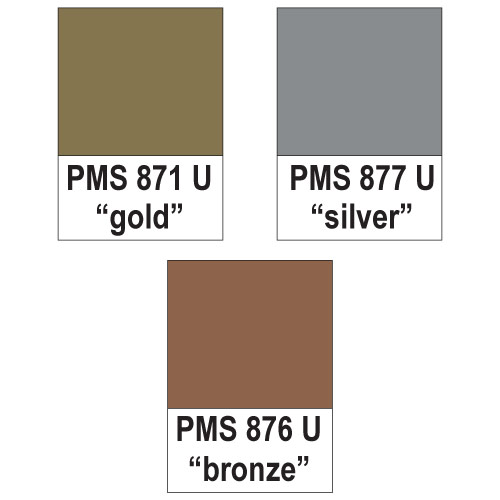

Spot printing, or solid printing, describes a commercial printing process where pre-mixed ink is applied to a printing surface. If a design requires multiple colors, each color uses a separate printing plate, and the press runs multiple times.
Standardized color books, such as the Pantone Color Matching System (PMS colors) provide specific formulations for over 1800 colors. This allows precise color matching between products and print runs, even across different manufacturers.
Spot printing is the preferred method for printing metallic colors. For metallics, we use gold (PMS 871), silver (PMS 877), and copper (PMS 876).
Foil Embossing?
Foil embossing, or stamping, uses heat and a metal die cast to apply a thin layer of foil film to a printing surface. The die cast acts as a large metal stamp, pressing the foil onto the paper. And the heat acts as a glue, adhering it.
Unlike ink, foil film is solid and opaque. It does not absorb into paper.
Napkin Printing with Spot Colors
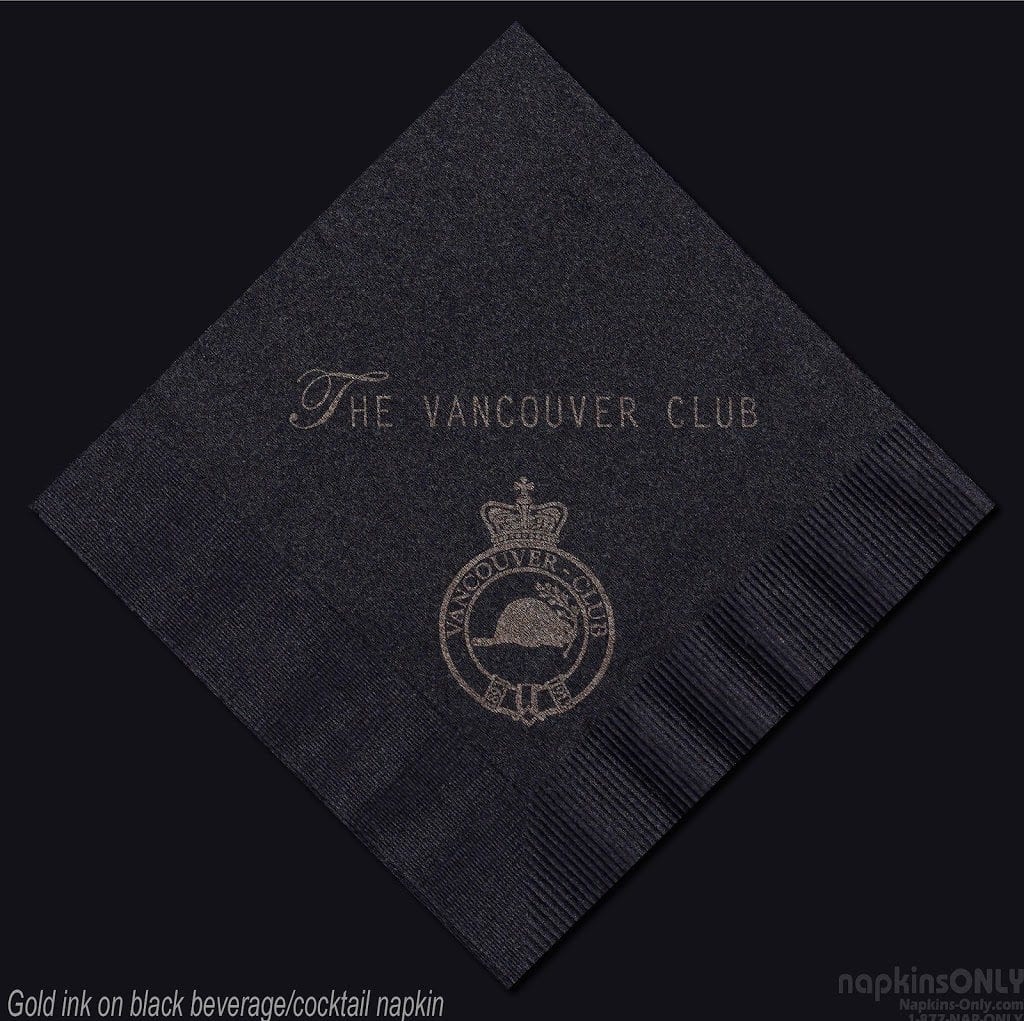
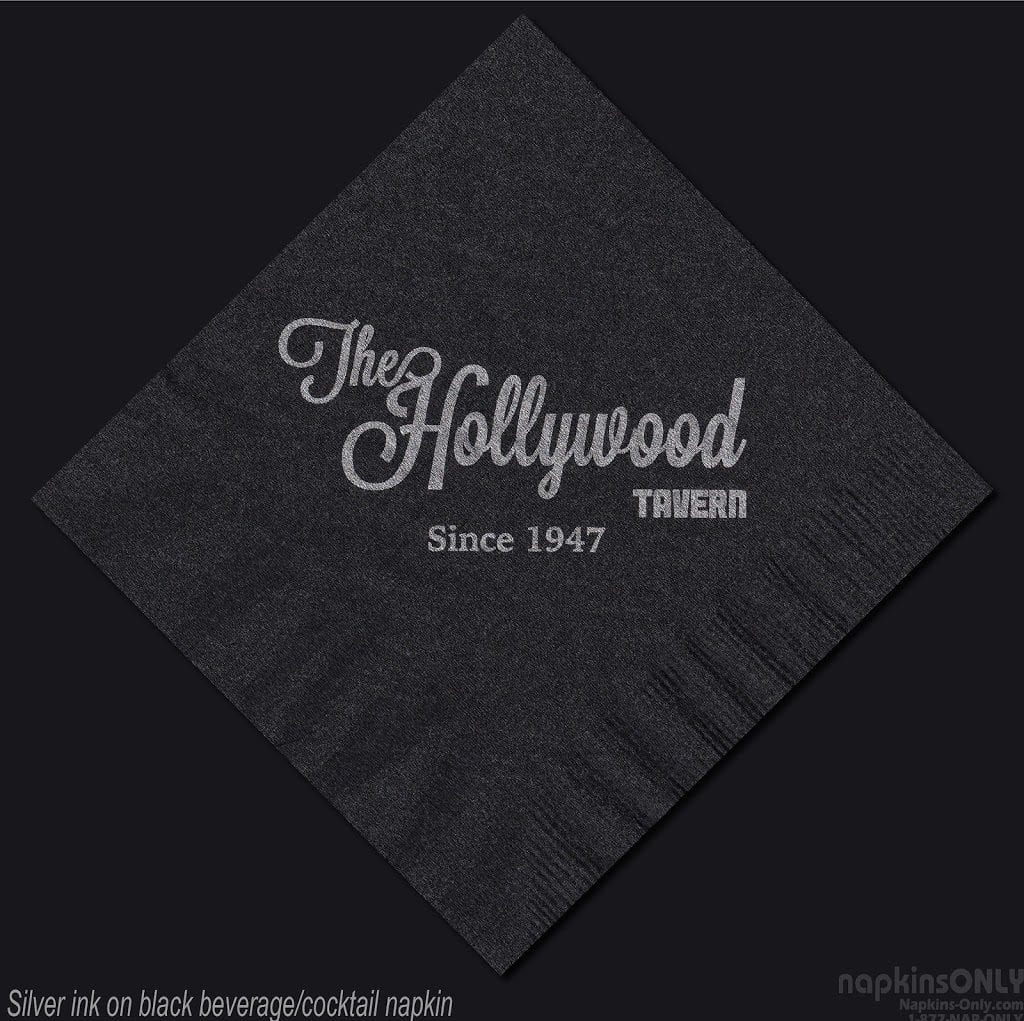
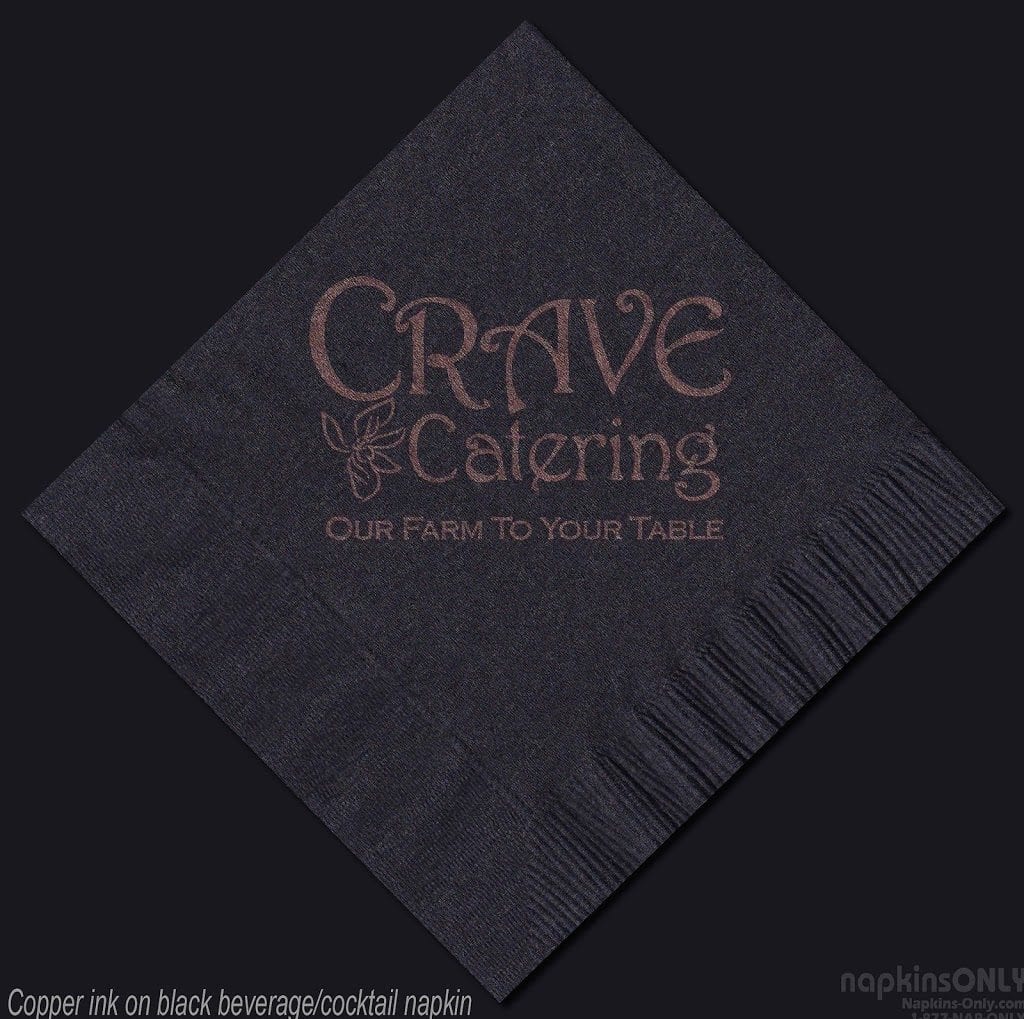
Unique to napkin printing, spot inks do not print opaque. Napkin tissue is porous and absorbent. As such, inks absorb into the product differently than they would on paper. While the ink colors do not change, napkin absorbency may create the illusion of color change. Thus, metallic inks may not render “true” on every color of tissue.
Nonetheless, spot ink printing remains the most common printing method for custom napkins. Gold, silver, and copper inks print well on white and black napkins. And certain shades of colored napkins produce an adequate product.
Napkin Printing with Foil Emboss
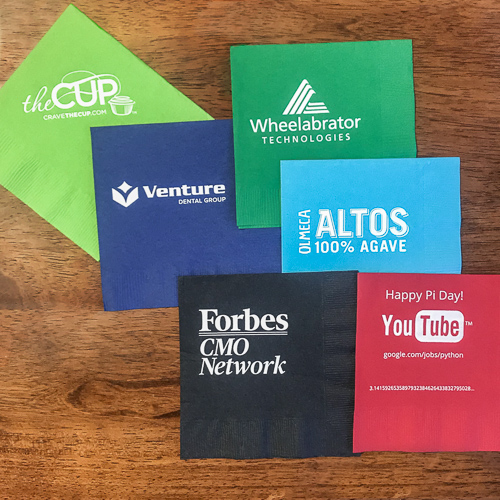
We foil imprint with gold, silver, black, white, green, red, and blue metallic foils. Unlike ink, foil is a solid product. In manufacturing, foil spools are unwound and a custom stamp (with your print), stamps your image onto the surface beneath (your napkin).
Because foil is a solid, it does not absorb into the tissue of the napkin. It will hold its color across all shades of tissue. But because it is physically stamped onto the product, it does not render smoothly on all textures of paper, especially paper linens. Foil on paper linens prints jaggedly and may fleck off when wet. For quality purposes, we do not foil stamp on paper linen napkins.
Printing on Napkins with Metallic Inks
The Pros:
1) Price – Metallic ink spot printing is less expensive than foil. If price-conscious, we recommend metallic inks.
2) Subtlety – Metallic inks offer a subtle alternative to foil printed napkins. Foil is a bright, light-catching medium. Some customers find the extra glimmer distracting or gaudy.
3) Printing on Paper Linen Napkins – Although exceptions exist, we rarely foil print on paper linen napkins. We recommend spot inks for any customer interested in a paper linen napkin.
The Cons:

1) Lack of Opacity – Metallic inks are not opaque. The color of the ink dilutes when applied to the napkin surface.
2) Poor Color Combinations – Metallic spot inks do not render well on all shades of napkin tissue. Certain color combinations, such as gold and copper inks on red and brown napkins, barely show up.
The Best Uses for Metallic Inks
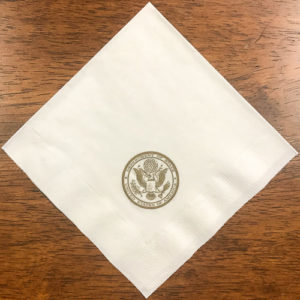
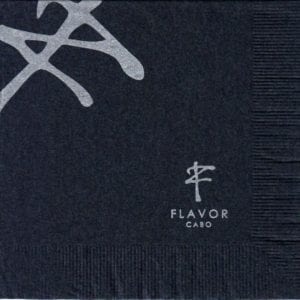
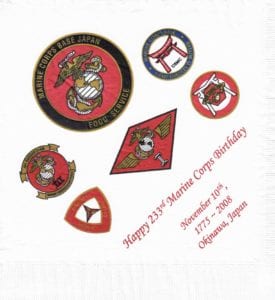
Universally, metallic inks render well on white napkins: gold and copper shine brilliantly, silver is demure and elegant.
Metallic inks also print well on black napkins. Silver sparkles, and gold and copper glimmer subtly and elegantly.
Colored napkins are a bit more complicated: silver prints well on red and navy napkins. Gold prints well on purple and brown.
While individual color combinations vary, it is safe to assume that silver prints well on dark shades, and gold and copper on contrasting/light shades.
Please contact us if you have a question about a specific color combination.
Foil Embossing on Napkins
The Pros:
1) Vibrancy – Foil catches the light and your printed napkin will glimmer in a “traditionally metallic” way.
2) Opacity – Foil embossing renders exactly the same on all colored napkins. Any color of foil prints equally well on any shade of napkin.
The Cons:
1) Price – Foil is more expensive. It may be cost prohibitive to foil stamp a very large napkin order
2) “Flaking” – Although not common, foil occasionally flakes off the napkin or appears jagged around the edges. This is especially true for prints with very fine details, foil prints on paper linen napkins, or napkins stored for over 5 years.
**We work with you to minimize or eliminate any risk of flaking.**
The Best Uses of Foil Printing:

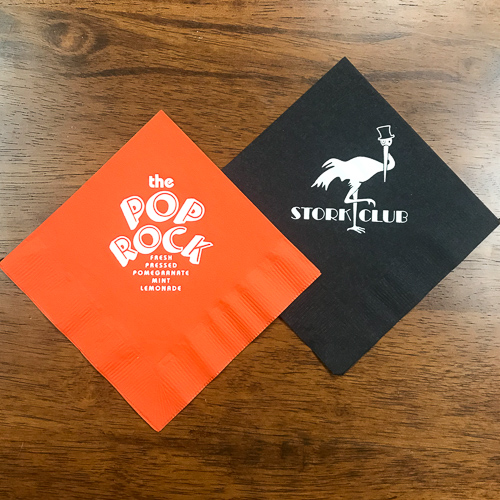
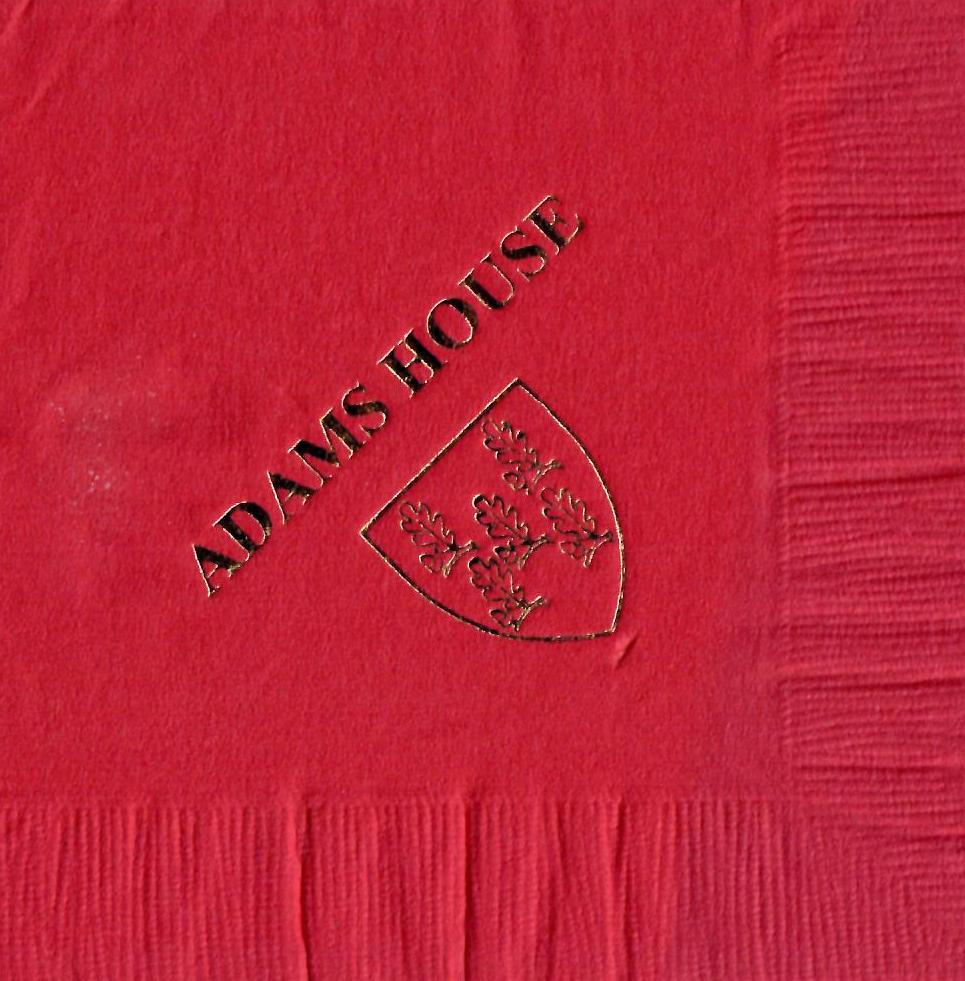

Use foil when seeking a bold, bright print job that naturally looks “metallic.” When price is not a consideration, foil prints more consistently on all napkin colors, and glimmers more realistically than metallic ink.
This is especially true for silver foil. While metallic silver ink universally renders the best of all three metallic choices, it occasionally loses its luster and appears “whitish.” If you seek a sparkling, shining silver, foil is the better choice.
In Summary
While we always provide samples to our customers before purchase, it is up to the consumer to review their options and make the best choice that suits their needs and budget. Foil, while usually a clearer product, can be prohibitively expensive. If budget is a consideration, manipulation of ink and napkin choices may be the better choice. Similarly, if a customer wants a demure product, they might prefer the softer look of metallic inks.
In contrast, a customer seeking a specific shade of tissue may find that only foil provides the necessary contrast for their print job (this is especially true for middle-shade colors like lime and hot pink). Additionally, some customers naturally gravitate towards the bright, light-catching nature of foil print jobs.
Questions? Reach out to us!
Curious about pricing? Request a quote now!

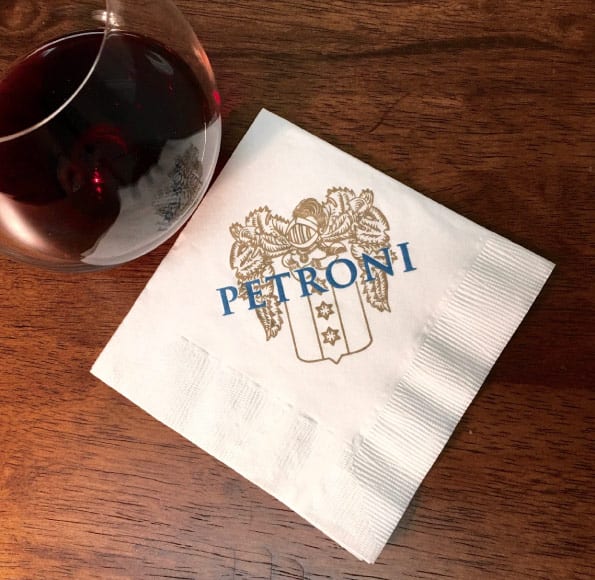

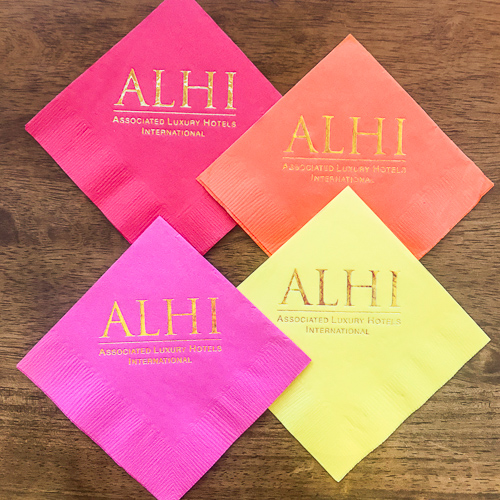

Leave a Reply